Tomato Talk
A Full Season of Tomato-Growing Information
The Nightshade Family
This broad group includes tomatoes, peppers, potatoes, and eggplant as well as many other edible and non-edible plants. Nightshades all contain the poisonous glycoalkaloid solanine—though in varying amounts. Large amounts of tomatoes (Solanum lycopersicum) are not likely to make someone ill, whereas a lot of black nightshade (Solanum nigram) may. Want to add switch up the nightshades to your garden? Try growing some of these next year:
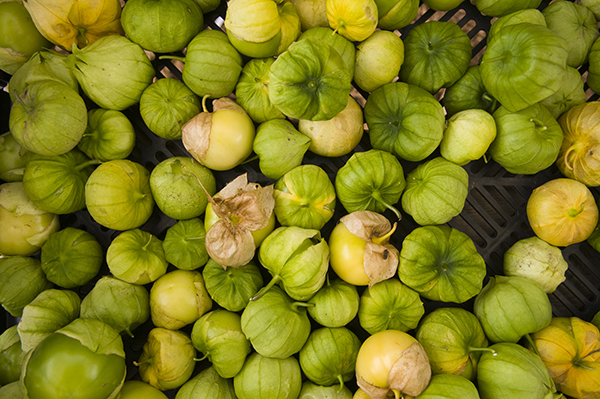
Tomatillos (Physalis ixocarpa)
Tomatillo
This staple of Mexican salsa verde has a sprawling bush habit. Its green, tomato-like fruits grow to full size and ripeness inside a papery husk, and have a tart, dry flavor. Purple cultivars have a sweeter flavor, and both contain high amounts of pectin, so are a good choice for canning and to add to preserves. Tomatillos (Physalis ixocarpa) prefer the same soil conditions as their cousins, and may be grown in cages, on trellises, or left to sprawl. They are indeterminate and prolific, so a few plants will produce continual fruit from the beginning of August through first frost. Pull plants at the end of the growing season to prevent prolific self-seeding in the spring.
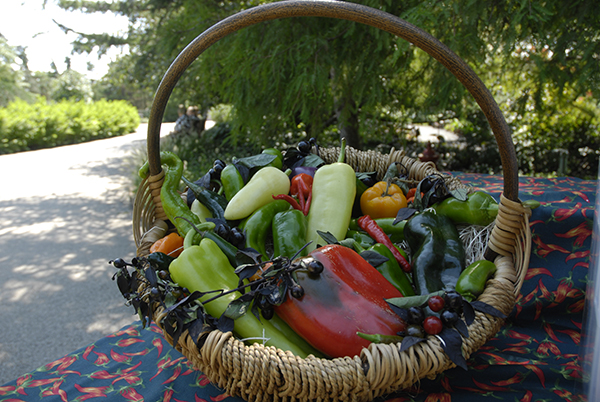
Peppers (Capsicum sp.)
Peppers
The 2016 Herb of the Year, peppers (Capsicum sp.) need heat to thrive. Many peppers, including bell or sweet peppers and jalapeños, are eaten when still green. If left on the plant longer, they all will ripen, usually to become red with more heat. That heat comes from the compound capsaicin. The body often reacts to capsaicin by sweating, which some suggest is one reason hot peppers are popular in hot climates.
Get the most from your pepper plants with our Plant Information tips. Smaller, bushy hot pepper varieties do very well when grown in containers. As pepper plants tend to be brittle, stake stems carefully and don't pull fruit when harvesting—use a sharp knife or snips. At the end of the growing season, pull the entire pepper plant and hang in a warm, dry spot indoors until remaining fruits ripen.
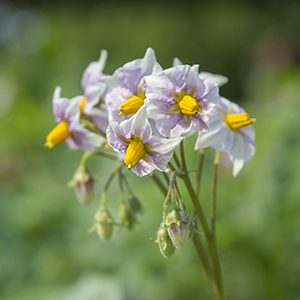
Solanum tuberosum 'Desiree' potato in bloom
Potatoes
Potatoes (Solanum tuberosum) are uncommonly easy to grow and even easier to harvest: simply lift the dried plants from the ground at the end of the season with a spading fork. Store some tubers for next season to cut and plant again (read our potato-growing tips in Smart Gardener).
As with tomatoes, it is a good idea to rotate potato crops each year to avoid disease. Potatoes are notoriously susceptible to nematodes, which destroy the potato root system. Nematode cysts from infected potato roots can remain in soil for up to 20 years.
Another option for cultivating nematode-free potatoes is potato bags. Fill the bottom of a large bag with a few inches of soil and compost mix and plant seed potatoes. As the potatoes sprout, add soil/compost mix. Once the soil level reaches a few inches below the top of the bag, allow potatoes to flower and die back, then harvest.
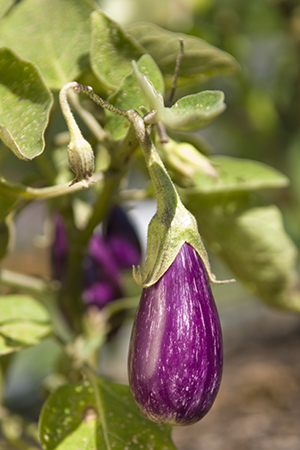
Solanum melongena 'Fairy Tale'
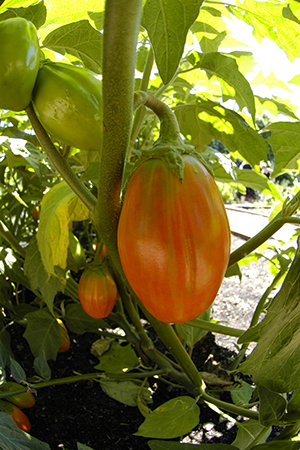
Solanum melongena 'Red Egg'
Eggplant/Aubergine
Packed with fiber and antioxidants, eggplant (Solanum melongena) actually comes in many different shapes and colors. From long and bulbous to plump, softball-sized orbs, or dark, glossy purple to striped green or cream-colored fruit, eggplant is a wonderful addition to the home vegetable garden.
Smoked or grilled eggplant is the base for the popular dip baba ghanoush, but is most often salted and grilled or breaded and fried for a late summer treat.
Eggplant is similar in habit and flower to potato, but is generally pruned like a tomato plant, by removing suckers growing in the leaf axils, and clipping off lower leaflets once the plant has begun to flower, to improve air flow and reduce the likelihood of disease. Larger-fruiting varieties may need to be staked or caged.
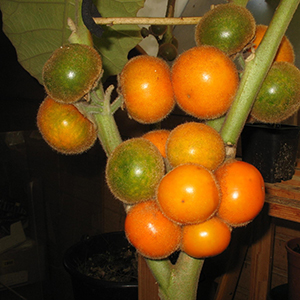
Naranjilla, or lulo (Solanum quitoense )
Naranjilla, or Lulo
In the summer of 2013, we grew one VERY interesting nightshade in the Grunsfeld Children's Growing Garden: naranjilla (Solanum quitoense), also known as lulo. (Read more about it in our blog.) This smallish, orange-red fruit looks very similar to a tomato, but has a tart citrus flavor.
While this South American native can be grown in the Chicago area, our growing season is to short for it to bear ripe fruit. Naranjilla lovers will need to visit a Latin grocery store to purchase the fruit, which is popular in drinks, ice cream, and esponjado, a dessert similar to a flan or mousse.

